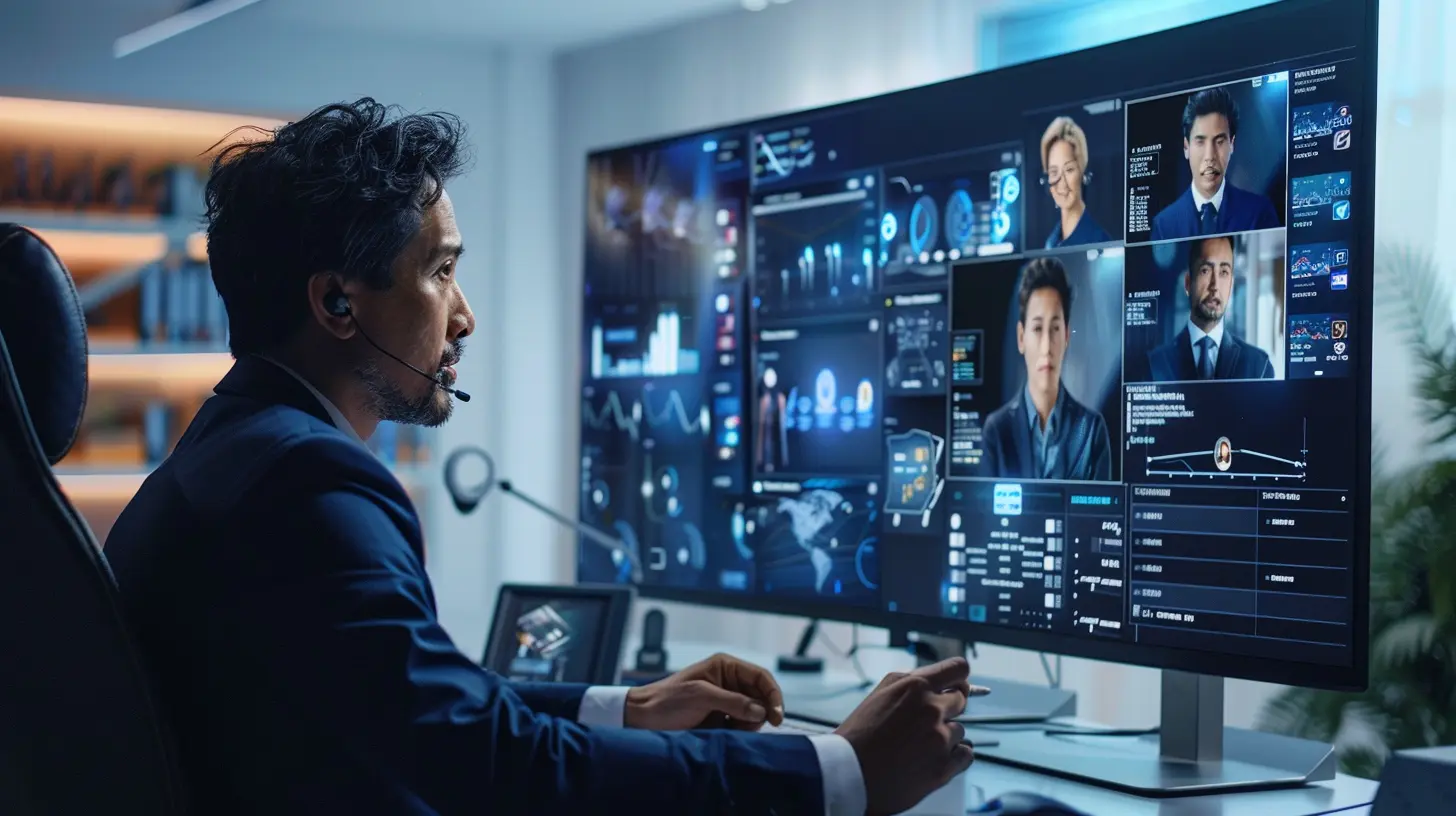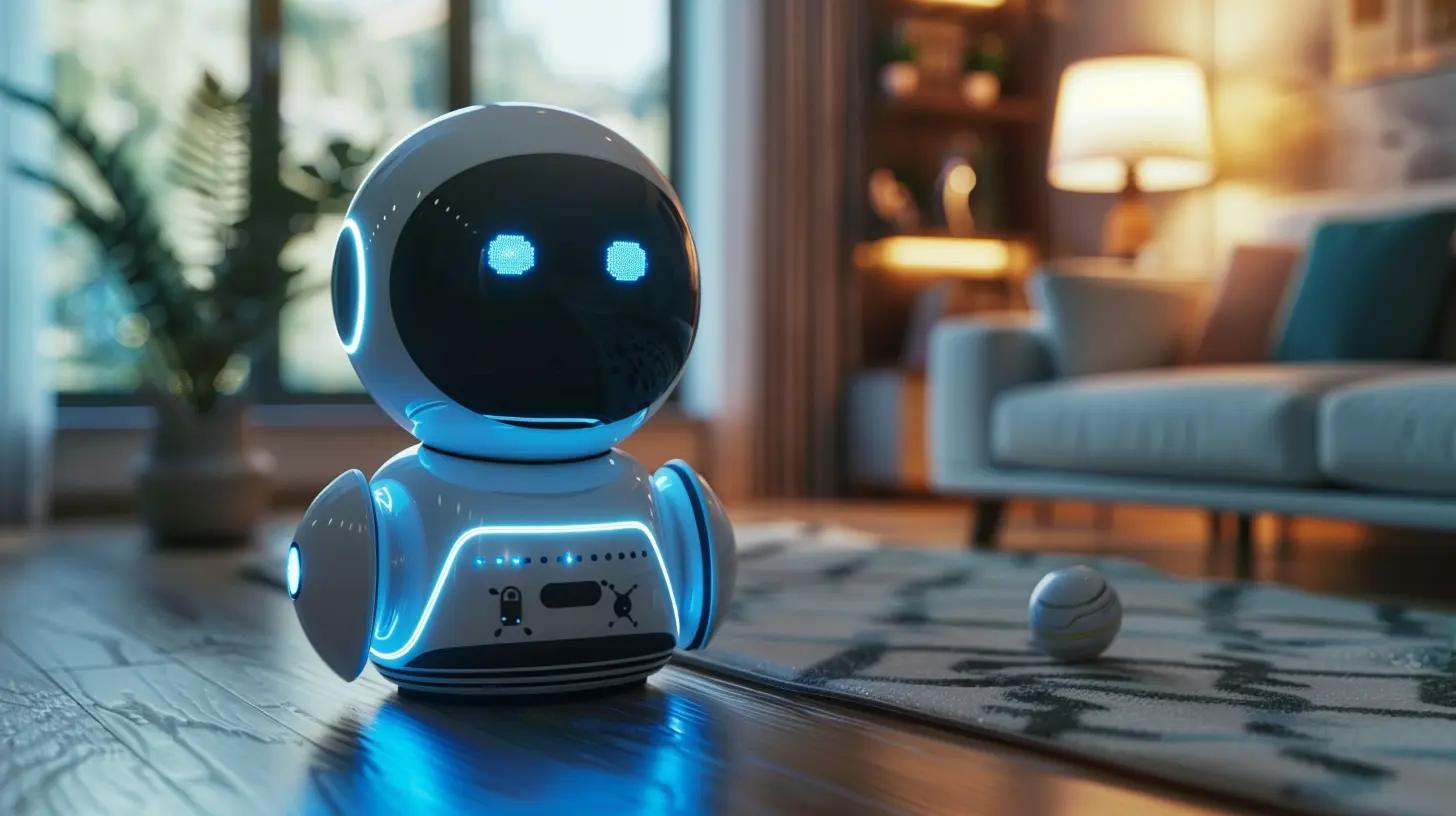How Smart Displays Are Evolving with AI and Machine Learning
10 November 2025
Technology is moving faster than ever, and smart displays are no exception. You’ve probably noticed these devices popping up everywhere — from kitchen counters to office desks — transforming the way we interact with our environment. But what’s really driving their evolution? The answer lies in the convergence of artificial intelligence (AI) and machine learning (ML). These two powerhouses are reshaping smart displays, turning them from basic screens into intelligent companions. Let's dive into how AI and ML are fueling this evolution and what it means for the future of smart displays.

The Rise of Smart Displays: A Quick Overview
Before we get into the nitty-gritty of AI and machine learning, let's take a moment to understand what smart displays are. In simple terms, smart displays are devices equipped with touchscreens, speakers, microphones, and voice assistants. Think of them as the love child of a tablet and a smart speaker — they offer a visual interface to complement voice interactions. Devices like the Amazon Echo Show, Google Nest Hub, and Facebook Portal are classic examples.When they first hit the market, smart displays were relatively basic. You could ask them to play music, set reminders, or control smart home devices. But that was just the beginning. As AI and machine learning have advanced, these displays have evolved into much more than just fancy speakers with screens. They’re now capable of understanding context, learning from user behavior, and providing more personalized experiences.

AI and Machine Learning: The Dynamic Duo
So, what exactly are AI and machine learning, and how are they making smart displays... well, smarter?Artificial Intelligence (AI)
AI, in its simplest form, is the simulation of human intelligence by machines. It’s what allows devices to think, learn, and even make decisions based on data. When we talk about AI in smart displays, we’re referring to the ability of these devices to understand natural language, process information, and respond intelligently to our commands.Machine Learning (ML)
ML is a subset of AI, but it’s a game-changer on its own. Machine learning enables devices to learn from data over time without being explicitly programmed. In other words, the more you interact with your smart display, the better it becomes at predicting your needs and preferences. Think of it like a digital butler that gets better at its job the longer it works for you.Together, AI and ML are transforming smart displays from reactive devices into proactive companions.

Contextual Understanding: The Heart of AI in Smart Displays
One of the biggest ways AI is enhancing smart displays is through contextual understanding. Early versions of these devices could only respond to direct commands. For example, you’d have to say, “Play jazz music from Spotify.” But now, thanks to advancements in AI, smart displays can understand context. You can say something as vague as “Play something relaxing,” and the device will know to pull up your favorite playlist or suggest a soothing podcast.AI allows the device to analyze not just your words, but also the situation. It can take into account factors like time of day, your previous interactions, and even your location to tailor its responses. For instance, if you ask your smart display for the weather in the morning, it might also remind you about your upcoming meetings or suggest a quicker route to work based on traffic conditions. It's almost like the device is reading your mind — or at least trying to.

Voice Recognition and Natural Language Processing
Voice recognition technology has come a long way, and it’s all thanks to AI. Early smart displays often struggled to understand accents, slang, or even subtle nuances in speech. But with advancements in natural language processing (NLP), smart displays are becoming much better at understanding and responding to complex language patterns.NLP allows these devices to break down sentences, analyze their structure, and truly understand the meaning behind the words. As a result, conversations with smart displays feel more natural. You don’t have to speak like a robot to get them to understand what you want. Whether you’re asking about the weather or requesting a recipe, the interaction is more fluid and human-like.
And guess what? Machine learning is constantly at work here too. The more you interact with the device, the better it gets at recognizing your specific voice patterns, preferences, and even your accent. It’s like having a personal assistant who’s always improving their skills.
Personalization: A Smarter Experience Tailored to You
One of the most exciting aspects of AI and ML in smart displays is the level of personalization they bring to the table. These devices are no longer one-size-fits-all; they adapt to individual users based on behavior and preferences.Let’s say you frequently use your smart display to check the news every morning. Over time, the device will recognize this pattern and might start recommending news stories that align with your interests without you having to ask. Or, if you like cooking, your smart display can learn your favorite recipes and suggest new ones based on ingredients you usually have at home.
AI also plays a role in creating personalized routines. For instance, your smart display might automatically dim the lights and play relaxing music when it detects you’re winding down for the night — all without you lifting a finger.
This level of customization transforms smart displays from passive devices into active participants in your daily life. They anticipate your needs and offer solutions before you even realize you need them.
Smarter Homes with AI-Driven Smart Displays
If you’re into smart home gadgets, then you know how important smart displays are as control hubs. With the help of AI and machine learning, they’re becoming even better at managing connected devices.Imagine coming home after a long day. Instead of fumbling with multiple apps to adjust your lights, thermostat, and security cameras, your smart display can do it all for you. With advancements in AI, smart displays can now control these devices more intuitively. For example, they can recognize when you’re away from home and automatically turn off the lights or lower the thermostat to save energy.
Machine learning also enhances the smart home experience by learning your routine. If you typically turn off the living room lights around 10 PM and set the thermostat to a specific temperature, your smart display will start doing that for you automatically. It’s like living in a house that just “knows” you.
Visual Recognition: The Next Frontier
While voice commands are great, visual recognition is the next big leap for smart displays. Thanks to AI, some smart displays are now equipped with cameras that can recognize faces and objects. This opens up a whole new world of possibilities.For instance, a smart display in your kitchen could recognize the ingredients you have on hand and suggest recipes accordingly. Or, in a family setting, the device can recognize different members of the household and provide personalized content for each person. Think of it as the smart display version of Netflix profiles.
AI-driven visual recognition also has practical applications in security. Some smart displays can act as security cameras, using facial recognition to identify who’s at the door and alert you if there’s an unfamiliar face. It’s like having an AI-powered watchdog that never sleeps.
Privacy Concerns: What About My Data?
Of course, with all this talk about AI and machine learning, it’s natural to wonder about privacy. After all, these devices are constantly collecting data to improve their performance. So, what’s being done to protect your personal information?Most smart display manufacturers are aware of these concerns and have implemented various privacy features. For example, many devices allow you to delete your voice recordings or disable the camera and microphone when not in use. Some smart displays even come with physical shutters to cover the camera for added peace of mind.
Moreover, AI and ML algorithms are increasingly being designed to process data locally on the device rather than sending it to the cloud. This means your data stays on the device, reducing the risk of it being intercepted or misused. While privacy will always be a concern, manufacturers are working hard to strike the right balance between personalization and security.
The Future of Smart Displays: What’s Next?
So, where do we go from here? The future of smart displays looks incredibly promising, thanks to ongoing advancements in AI and machine learning. We can expect even more personalized, intuitive, and context-aware interactions.In the near future, smart displays could become even more integrated into our daily lives. Imagine a world where your smart display not only controls your home but also syncs with your car, your workplace, and even public spaces. AI advancements could enable these devices to act as seamless extensions of our own consciousness, anticipating our needs and making our lives easier in ways we can’t yet imagine.
And it’s not just about individual experiences. As AI continues to improve, smart displays could play a key role in larger systems like smart cities, helping to manage traffic flow, optimize energy consumption, and improve public safety.
One thing’s for sure: smart displays are no longer just simple screens. They’re evolving into powerful, AI-driven tools that will shape the way we live, work, and interact with technology.
Conclusion
The evolution of smart displays, powered by AI and machine learning, is nothing short of revolutionary. These devices are no longer just passive screens — they’re becoming active, intelligent companions that can learn from us, anticipate our needs, and make our lives more convenient. Whether it’s through improved voice recognition, personalized routines, or even visual recognition, AI and ML are pushing the boundaries of what smart displays can do.As we look to the future, it’s clear that smart displays will continue to play an increasingly important role in our daily lives, making everything from managing our homes to interacting with technology more seamless and intuitive. So, if you haven't jumped on the smart display bandwagon yet, now might be the perfect time.
all images in this post were generated using AI tools
Category:
Smart DisplaysAuthor:

Reese McQuillan
Discussion
rate this article
1 comments
Garrett Bowman
In the glow of screens, wisdom blooms, AI whispers, crafting our rooms. Smart displays dance, learning our lore, With each interaction, we dream of more. A future bright, tech’s endless shore.
November 10, 2025 at 3:46 AM


